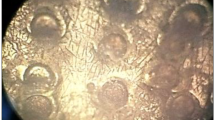Abstract
With the fast development and frequent changes of the engineering products, natural resources are arbitrary exploited and the environment is used without repayment, which causes many problems of great magnitude such as zoology damaged all over the globe, resource waste and depletion, environmental pollution and so on. Therefore, remanufacturing engineering is the necessity of the current scenario to solve the ambivalence of economic development and resource shortcoming. This article provides an insight on the economic analysis of remanufacturing engineering using a comparative analysis of upgraded part with the new part. Interestingly, hybrid electrochemical abrasive finishing (ECAF) have a unique capability to finish the 3d part in a single setup which majorly help to minimize the operation time. It is found that the remanufactured part cost only 42.12% of new part with 94% savings of material. No significant changes in realistic surface micro-structure and micro-hardness have been observed after ECAF process. SEM micrograph depicts the no presence of micro-cracks, craters, voids, scars and peeling on the rebuild surface. It means that the remanufactured part is able to perform like a new performer.






Similar content being viewed by others
References
Fernand J (ed) (2008) Weiland Remanufacturing Automotive Mechatronics & Electronics, APRA
Gallo M, Romano E, Santillo LC (2012) A perspective on remanufacturing business: issues and opportunities, International Trade from Economic and Policy Perspective https://doi.org/10.5772/2726
Jain VK (2016) Nanofinishing science and technology: basic and advanced finishing and polishing processes, CRC Press, Taylor & Francis Group
Parker D (2015) Remanufacturing Market Study For Horizon 2020, grant agreement No 645984
Seliger G, Basdere B, Ciupek M, Franke C (2003) Contribution to efficient cellular phone remanufacturing. In: CIRP Seminar on Life Cycle Engineering, Copenhagen. Denmark, May 2003
Seliger G (2007) Sustainability in manufacturing: recovery of resources in product and material cycles. Springer, Berlin
Singh H, Jain PK (2015) A comparative study of precision finishing of rebuild engine valve faces using micro-grinding and ECH process. J Remanufact 2015:5(6). https://doi.org/10.1186/s13243-015-0016-5
Singh H, Jain PK (2015) Finishing characteristics of plasma and HVOF cladding. Proceeding for International Conference on Advances in Materials, Manufacturing and Applications (AmmA - 2015), NIT Trichy, April 9-11, 2015, pp. 48
Singh H, Jain PK (2016) Influence of ultrasonic vibrations on process performance of electrochemical honing. J Adv Manuf Technol 87(1):1057–1066
Skerlos SJ, Zettl M, Basdere B, Seliger G (2004) Collaborative development of sustainable strategies for the reuse of mobile phones in a global educational environment. In: Proceedings Global Conference on Sustainable Product Development and Life Cycle Engineering, Berlin, Germany, S. 337–344
Author information
Authors and Affiliations
Corresponding author
Ethics declarations
Conflicting interests
The author(s) declared no potential conflicts of interest with respect to the research, authorship, and/or publication of this article.
Rights and permissions
About this article
Cite this article
Singh, H., Jain, P.K. Economic analysis of remanufacturing of engine valves - a case study. Jnl Remanufactur 9, 51–60 (2019). https://doi.org/10.1007/s13243-018-0055-9
Received:
Accepted:
Published:
Issue Date:
DOI: https://doi.org/10.1007/s13243-018-0055-9




